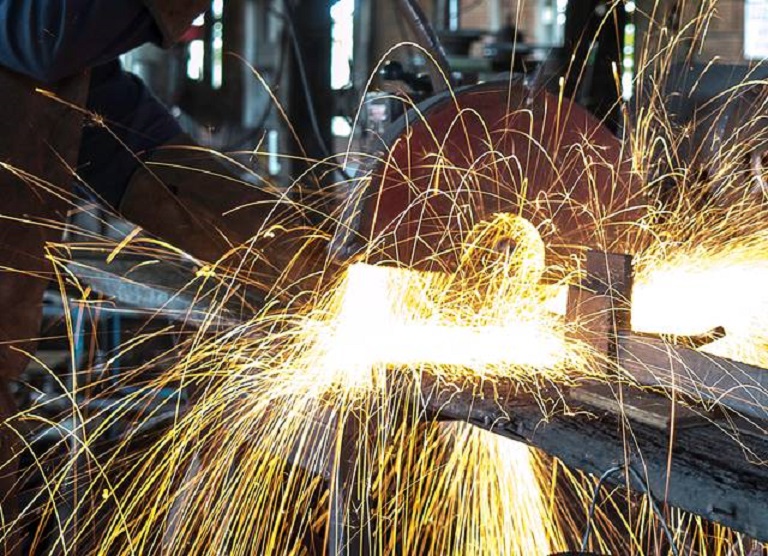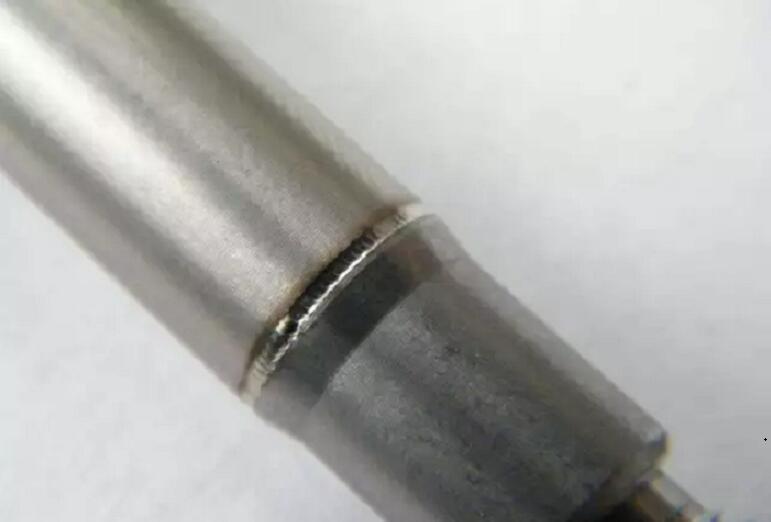Weldability between Titanium Alloy and Stainless Steel

Weldability between Titanium Alloy and Stainless Steel
Titanium and titanium alloys are widely used in aerospace, petrochemical, medical equipment, and other fields due to their high specific strength, high melting point, good toughness, and excellent corrosion resistance. However, due to the low elastic modulus, poor weldability, and workability of titanium, the price is relatively expensive, which limits its application, while stainless steel is a high-strength, low-cost structural material, and has good corrosion resistance, weldability, and processability.

Weldability between Titanium Alloy and Stainless Steel
If titanium alloy and stainless steel can be used in combination, the composite component can have the excellent properties of the two materials at the same time, while reducing production costs. However, the welding of titanium alloy and stainless steel belongs to dissimilar metal welding, and various welding problems that are prone to occur in the process cannot be ignored.
Weldability of Titanium and Titanium Alloys
Titanium and titanium alloys have high chemical activity. At high temperatures, they are very easy to react with hydrogen, oxygen, carbon dioxide, water, etc. in the air, resulting in a decrease in the plasticity and impact toughness of the welded joints, and at the same time, volume expansion causes greater stress. This leads to pores near the fusion line, which can lead to cold cracks in severe cases.
Titanium and titanium alloys have special thermophysical properties. Titanium alloy has the characteristics of a high melting point, small heat capacity, and low thermal conductivity. Therefore, the welding thawing is easy to produce an overheated structure and makes the crystal grains coarser.
The elastic modulus of titanium and titanium alloys is about half smaller than that of steel, so the welding residual deformation is relatively large, and the correction of the deformation after welding is also difficult.
Weldability of Stainless Steel
Martensitic stainless steel is generally represented by 13% Cr steel (commonly known as 420 stainless steel). Problems such as low-temperature brittleness, deterioration of low-temperature toughness, and a decrease in ductility accompanying hardening are prone to occur during welding.
Ferritic stainless steel is represented by 18% Cr steel (commonly known as 430 stainless steel). When the welding temperature reaches about 475°C, the strength and hardness of the steel will be significantly improved, while the plasticity and toughness will be significantly reduced, resulting in strong embrittlement. Under the condition of heating for a long time at 700~800℃, it is prone to problems such as reduced corrosion resistance and delayed cracking.
Austenitic stainless steel is represented by 18%Cr-8%Ni steel (commonly known as 304 stainless steel), which generally has good welding performance. However, when high-alloy stainless steel with high nickel and molybdenum content is welded, it is easy to have the high-temperature crack, σ-phase embrittlement, corrosion resistance decline, stress corrosion crack, and other defects.
Duplex stainless steel has the characteristics of austenitic and ferritic stainless steel, has good welding performance, and is less sensitive to welding hot cracks. However, the increase of ferrite content in the heat-affected zone may cause problems such as reduced corrosion resistance and deterioration of low-temperature toughness.
Comprehensive Weldability Between Titanium Alloy and Stainless Steel
At present, the welding methods of titanium alloy and stainless steel mainly include laser beam welding, plasma welding, electron beam welding, explosive welding, friction welding, and diffusion welding.
Titanium, the main component of titanium alloys, and iron, the main component of stainless steel, are both high melting point materials, but their melting points differ by 140°C. In the welding process, when the stainless steel has reached a molten state, the titanium alloy is still in a solid state. At this time, the stainless steel material easily penetrates into the grain boundary of the overheated zone, causing the loss of the stainless steel material, the burning of alloy elements, or the evaporation, making the welded joint difficult to weld together.
In addition, titanium is chemically active and easily reacts with iron, chromium, nickel, and other alloying elements in stainless steel to form intermetallic compounds. It is easy to form brittle phases and large internal stresses at the joints during connection, resulting in joint cracks.
At present, there are still many problems to be solved in the welding of titanium alloy and stainless steel. But it is undeniable that the research on the welding of titanium alloy and stainless steel has great economic benefits.
Conclusion
Thank you for reading our article and we hope it can help you have a better understanding of the weldability between titanium alloy and stainless steel. If you want to find more information about titanium and titanium alloy, we would like to advise you to visit Advanced Refractory Metals (ARM) for more information.
Headquartered in Lake Forest, California, USA, Advanced Refractory Metals (ARM) is a leading manufacturer & supplier of refractory metals across the world. It provides customers with high-quality refractory metals & alloys like titanium, titanium alloys, tungsten, molybdenum, tantalum, rhenium, and zirconium at a very competitive price.
{{item.content}}
LEVE A REPLY
{{item.children[0].content}}
{{item.content}}






